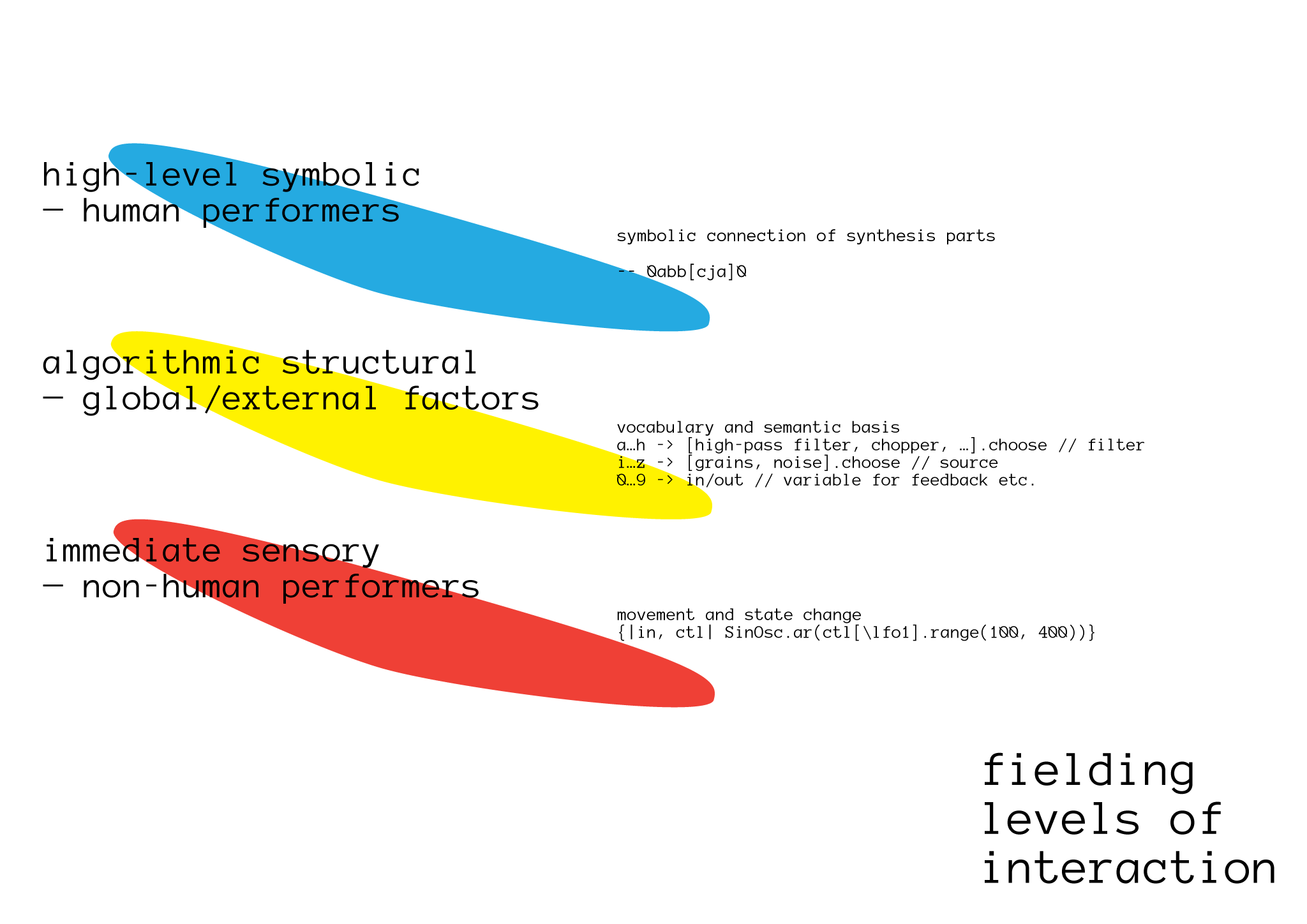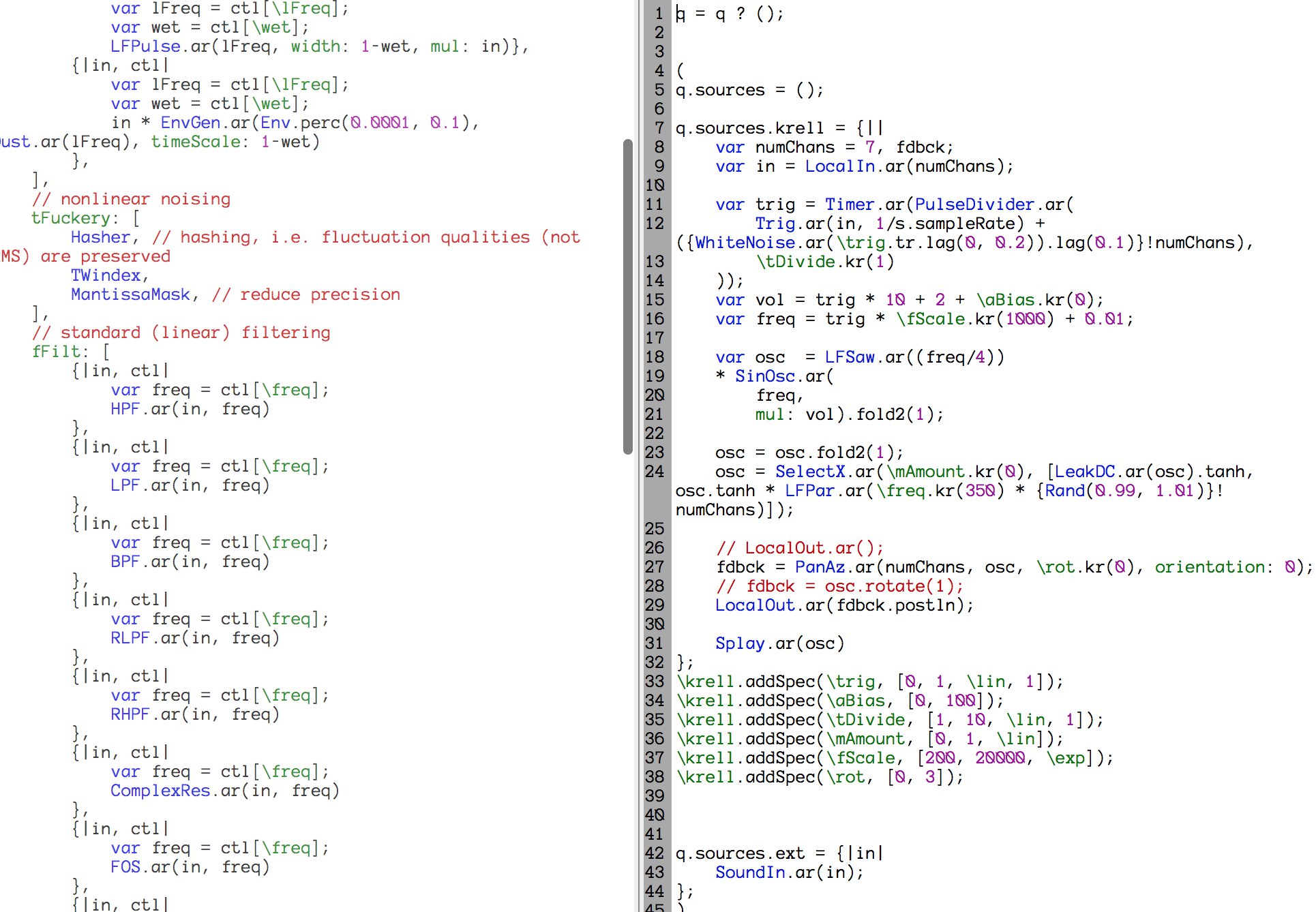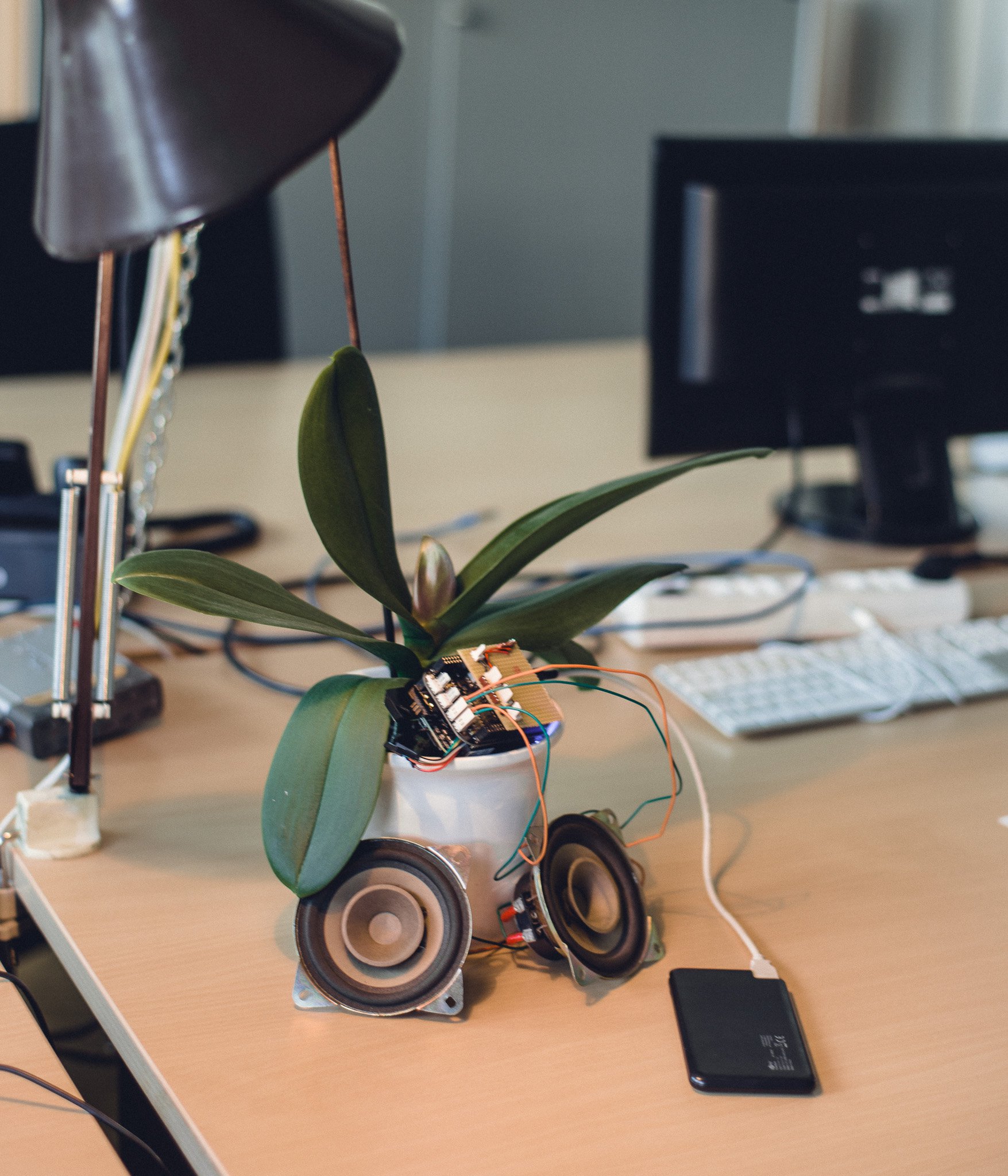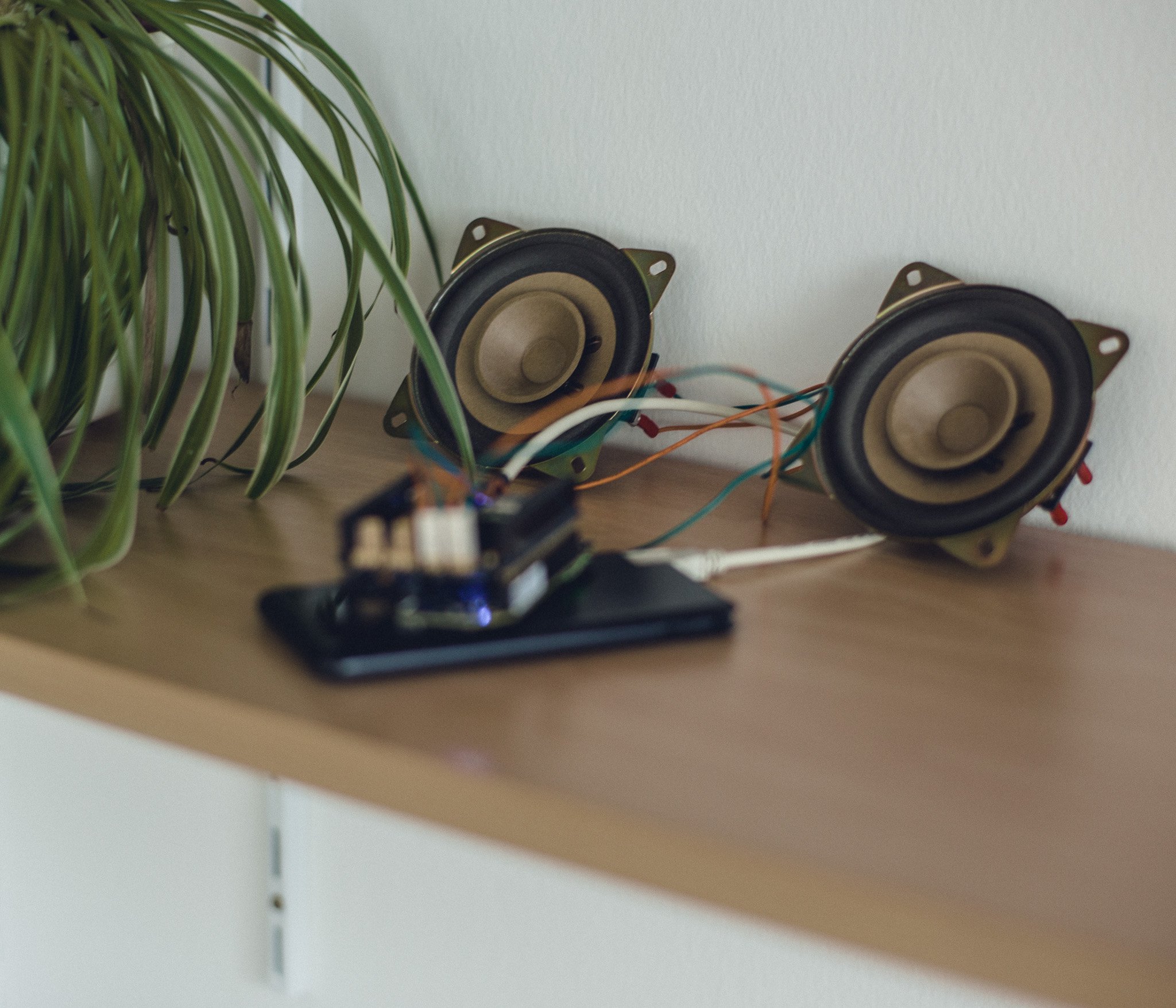I now have two fielding nodes ready to play with! They feature the most recent SuperCollider, are wireless (i.e. connect to a portable WiFi router and run off batteries), sync their time and date with each other, and have speaker chassis connected to their amplifiers. This means that by remotely firing up an scsynth process on them, I can remote-control them to play sounds that I write in SuperCollider on my laptop!
To get this up and running, I
- set up a fielding git repository,
- chose and installed [[posts/2017-08-06-wifi-on-bela-boards|WiFi USB dongles]],
- [[posts/2017-08-06-bela-crosscompile|(cross-)compiled]] SuperCollider for the BELA board on my OSX machine,
- installed and [[posts/2017-08-06-ntp-on-bela-board|configured ntpd]] (the network time protocoll demon),
- wrote a [[posts/2017-08-06-remote-control-bela-boards|ruby script]] to remote-control BELA boards connected either over the USB connection or over a standard network connection
- fixed a bug in SuperCollider that prevented proper
Ndefusage on external machines, and - prepared custom cables to power the BeagleBone’s from USB powerbanks.
Futher, I advanced the conceptual systematics of Fielding by fixing more details on the levels of interaction of the semantic layers.
 Fielding levels of interaction
Fielding levels of interaction
 Collection of filters and sources
Collection of filters and sources
 The first independant Fielding Node!
The first independant Fielding Node!
 The second independant Fielding Node!
The second independant Fielding Node!